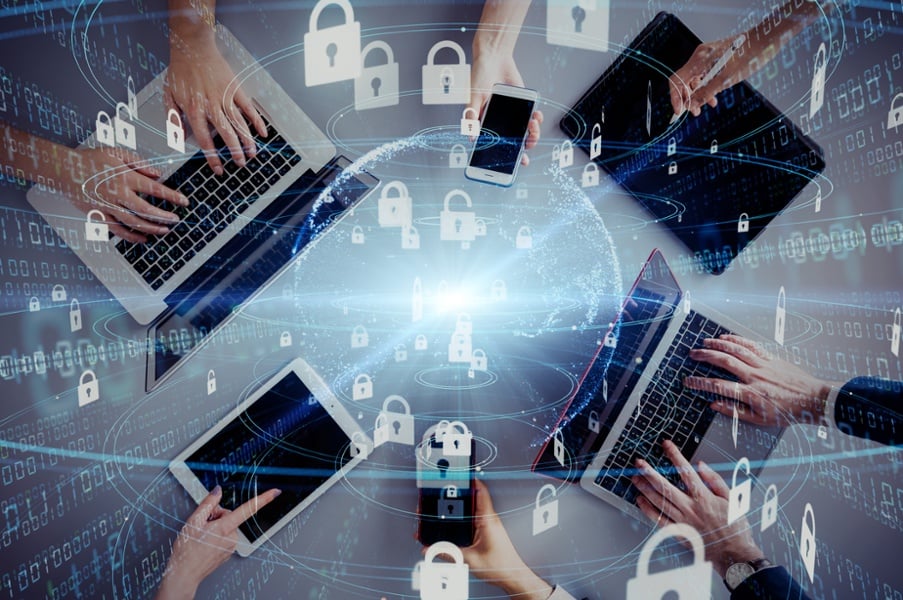Due to the COVID-19 pandemic, many K-12 educational institutions are using remote or hybrid learning models. This growing digital footprint has created a prime opportunity for malicious actors to take advantage of districts’ increased reliance on digital tools.
Identity Automation Blog
Blog Categories
- Cybersecurity (134)
- Company News (101)
- K-12 Education (80)
- RapidIdentity (71)
- Multi-Factor Authentication (69)
- Higher Education (44)
- Identity Governance (43)
- Identity Lifecycle Management (32)
- Single Sign-On (32)
- Healthcare (29)
- Access Management (19)
- Government & Public Sector (5)
- Identity Automation Pathfinder (1)
M&A Integration: The Top Four Identity Management Challenges
*Disclaimer: This article originally appeared on Forbes.
In recent years, mergers and acquisitions have seen a record number of transactions and continue to draw staggering figures. According to a recent IMAA report, 2018 saw about 49,000 global M&As with a combined enterprise value of $3.8 trillion. This year is projected to have similar or greater numbers.
How Districts Can Enable Secure Rostering to Digital Learning Resources
Ongoing innovations in pedagogy and learning strategies in the K-12 industry have spurred school districts to rapidly adopt digital tools for the classroom, while reducing their reliance on traditional print-based educational resources. To deliver their services, digital curriculum vendors require timely access to accurate and up-to-date student, teacher, and class roster data.
Access Denied: Safeguarding Digital Learning Resources in the New Classroom
Recently, we discussed the importance of Multi-Factor Authentication (MFA) as a tool school districts should leverage to help prevent data breaches and protect against threat actors. MFA is a sure step towards securing access to district systems and applications; however, with at-home instruction being K-12 education’s new normal, schools need to take an even more comprehensive approach to securing their resources.
SB 820 & COVID-19: Why MFA Must Be Part of Cybersecurity for Schools
While there is no user group that is safe from data breaches, K-12 is particularly vulnerable right now. In North Dakota alone, the state network used by K-12 schools, state universities, and other public agencies experience 5.7 known cyberattacks every month. Data breaches are not uncommon, and districts are limited in the measures they can take due to budget constraints.
Balancing Healthcare Security and Usability with Identity & Access Management
It’s no secret there are high expectations surrounding the healthcare industry, especially today with the state of emergency and fear bound to the COVID-19 Pandemic. Healthcare organizations must take even higher measures to protect patient and staff safety, deliver a high quality of care in an efficient manner, and keep patient records and information secure with adherence to compliance requirements.
A Zero-Trust Approach to COVID-19: Stay Secure While Working Remotely
Conferences, music festivals, sporting events, parades— every event imaginable from coast to coast is either already cancelled, postponed, or has attendees at the edge of their seats waiting for the latest update. Hospitals and healthcare systems are sending thousands of non-essential employees home to work remotely. Universities and K-12 school districts are also shutting down all over the world, affecting 300 million students globally.
Preventing the Top Healthcare Cybersecurity Threats With IAM, Part 4 - Insider Threats
From social engineering attacks and phishing to malware and hackers, the healthcare industry has a firm target on its back. As we explored in the other three parts of our healthcare breach crisis blog series, attacks can come from almost any vector with the payoff for criminals on the dark web or via ransomware being well-worth the effort.
How IAM Makes or Breaks Customer Experience During an M&A
There’s no question that merger and acquisition (M&A) transitions are incredibly complex, making successful integration a major component in realizing their full value. From a technology standpoint, this means implementing solutions, such as modern Identity and Access Management (IAM), that make integration as simple as possible.
The IAM Security Tools That Shape a Modern Identity-Based Perimeter
As recently as five years ago, establishing strong network controls and ensuring a defense-in-depth posture was enough to minimize the risk of a cyber-attack and keep the bad actors out of your network. However, times have changed, and the delineation of organizational perimeters has blurred between on-premise and cloud-based resources as more and more users need remote access to resources and accounts.
current_page_num+2: 4 -









